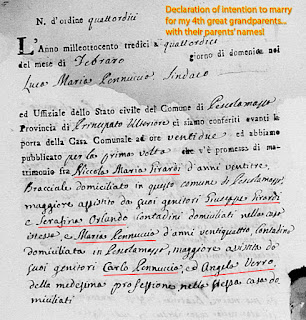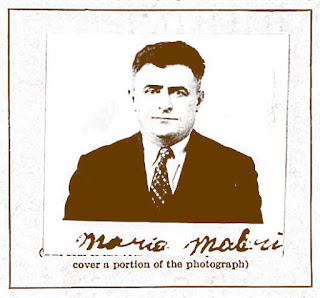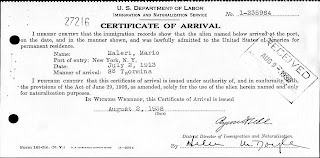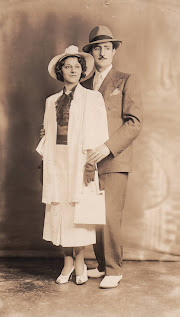 |
| My great great grandmother's birth record. |
It was even more exciting to me as a Yankees fan! (For non-fans, the Yankees' manager was Joe Girardi for many years.)
Last night, while the Yankees were winning their game, I was at my computer. I was going through birth records from the online Italian archives. (See
How to Use the Online Italian Genealogy Archives.) I was focusing on Maria Luigia Girardi's hometown of Pescolamazza—now called Pesco Sannita, Italy.
Her 1840 birth record gave me the names and ages of her parents: Gioacchino Girardi and Maria Teresa deNigris. I set Maria Teresa deNigris aside for the moment and worked to fill out this family more thoroughly.
First I looked for more siblings for Maria Luigia. I found Emidio born in 1843, Nicola Maria born in 1847, and Francesco Saverio born in 1851. Based on their parents' ages, there should be more children, both older and younger than Maria Luigia. But before finishing that search, I got excited to find her father Gioacchino's birth record.
 |
| My great great great grandfather's birth record. |
There he was, my 3rd great grandfather, born in 1814. His parents, my 4th great grandparents, were Nicola Girardi and Maria Pennuccia. He was their first-born child, but I found several younger siblings by going year-by-year through the birth records for their town.
Sibling Giuseppe was born in 1815, Francesco Saverio was born in 1817, but apparently he died because another Francesco Saverio was born in 1822. Maria Rosa was born in 1825 and Pietrantonio in 1829.
Once I was confident I'd found their first-born child, I went in search of the marriage of my 4th great grandparents. The documents for marriages in 1813 in Pescolamazza are incomplete, consisting only of each couple's two declarations of their intention to marry.
 |
| Bingo! My fifth great grandparents—two sets! |
But that was enough.
I found Nicola Girardi and Maria Pennuccia's declarations in February 1813. Each of these two documents contained the man and woman's parents' names.
There they were. Two sets of my 5th great grandparents from a branch I would never have discovered if I hadn't learned that previously unknown name of Girardi: Giuseppe Girardi and Serafina Orlando, and Carlo Pennuccia and Angela Verro.
During tonight's Yankees game, because I can't just sit on the couch all evening, I will search for more children born to these two couples. Their children will be my 4th great uncles and aunts. Having their names, and finding their children, will allow me to piece together a lot of the Girardi and Pennuccia documents from the town.
Finding the siblings is the only way to know how or if other people in this tiny town are related to me.
My experience in documenting the entire town of my grandfather taught me a lesson. (See
Why I Recorded More Than 30,000 Documents.) If people have the same last name, and it's a very small town, and it's an era when relocating was not common, they're most probably related.
So go after those siblings. If you're searching records from the 1800s, remember that a woman might give birth nearly every year, and well into her forties. While many of the children will not live to adulthood, I personally treasure each one. And I'm so thankful to find them.
Back to the search!




















